The Ionic Order. Continued
Description
This section is from the book "Cyclopedia Of Architecture, Carpentry, And Building", by James C. et al. Also available from Amazon: Cyclopedia Of Architecture, Carpentry And Building.
The Ionic Order. Continued
The section of the roll may be drawn thus: Draw the profile of the abacus and of the astragal. Then draw the exterior contour of the volute as far as its intersection with the line of the shaft, by establishing the cathetus and the first three points of the squares 1, 2, 3, and 1", 2", 3" in the eye. Draw a horizontal line ef marking the height of the center of the roll, fourteen parts below the abacus, and another horizontal three parts higher up. On the latter horizontal fix a point h six and five-tenths from the edge of the volute; from this point, with a radius of three, a semi-circumference may be drawn whose intersection with the horizontal k gives the center of the second arc of the section, which may be drawn with a radius of six. Then continue the lower line of the abacus and mark a point o three and five-tenths beyond its projection; this is the center of a third arc of the circle which may be drawn with a radius of seven.

PLATE IX. (A reproduction at small size of Portfolio Plate IX.)

. PLATE X. (A reproduction at small size of Portfolio Plate X.)
72. The principal figure of this plate (X) is the plan of the capital, which shows the horizontal form and the disposition of the rolls, as well as the combination of the circular mouldings with the square mass of the capital.
73. The Ionic capital is generally enriched with carved ornaments, the quarter-round is carved with eggs and darts, the bead of" the astragal is carved with bead and reel ornaments and the roll is carved with leaves, more or less detailed, while a rosette is frequently carved in the circle forming the eye of the volute.
74. The channels of the Ionic column differ from those of the Doric in the fillets which separate them; they are shown in this plate to be twenty in number, and the width of the fillet is equal to one-third of the width of the channel, so that, after having divided the circumference of the shaft into twenty equal parts, each of these is divided into eight, two of these eight parts being given to the fillet and six to the channel.
The plan of each channel is drawn from a center placed at a distance of one part outside of the circumference of the shaft, as is shown in the plate. (Plate X.)
75. The number of flutings of the Ionic shaft is frequently twenty-four instead of twenty, as here shown. In the attempt to differentiate between the Ionic and Corinthian capitals it is often desirable to allot a smaller number of flutings to the Ionic shaft. When this order is used at a small scale, it is very proper that the channels should be few in number, so as not to complicate the carving. For use in wood, however, twenty-four channels, with their centers placed on the line of the column circumference, are preferable, as they are sharper, more effective and better accord with the accepted number of seven flutings for the pilaster shaft. The flutings as shown in plan on Plate X are very shallow and do not "tell" as much as should be expected of this method of ornamenting the column. It is therefore suggested that in actual practice the method and number of flutings shown on the plan of the Corinthian shaft, Plate XIX, be also employed on the Ionic.
76. The cornice of the Ionic order (Plate XI) is less complicated than that of the Doric, having, with the exception of the dentils, none but horizontal divisions. The cornice is forty parts in height and its projection is equal to its height.
Certain of the mouldings are carved with the leaf and tongue, the egg and dart, and the bead and reel, the perpendicular divisions of which correspond to the axes of the dentils, which in turn correspond to the axes of the columns. The frieze is thirty parts in height and undecorated; the architrave is the same height as the frieze, and is composed of three bands or fascias and a crowning moulding. The band which rests on the capital is six in height and its face is plumb with the upper diameter of the column and with the frieze; the second band is seven parts in height and projects one part beyond the lower; between the second and third bands occurs a cyma-reversa two parts high; this third band has a projection of one and five-tenths beyond the second. The assemblage of mouldings crowning the architrave is composed of a bead moulding of one and five-tenths parts, and a cyma-reversa of three, crowned by a listel of two and five-tenths. The projection of these mouldings beyond the third band is three and five-tenths, so that the extreme projection of the architrave is six.
77. The base of the Ionic order (Plate XII) is twenty-three and five-tenths parts in height; it is composed of a plinth of eight, a first torus of six, a fillet of one and five-tenths, a scotia of three, a second fillet of one, and a second torus of four. The projection of the base, including the conge of the shaft, is eight, of which two is the projection of the conge This is shown on the enlarged section of the pedestal and column base at the left.
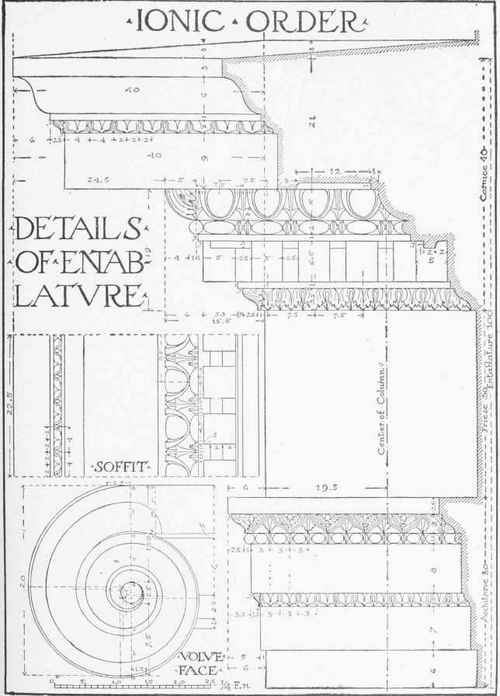
PLATE XI. (A reproduction at small size of Portfolio Plate XI.)
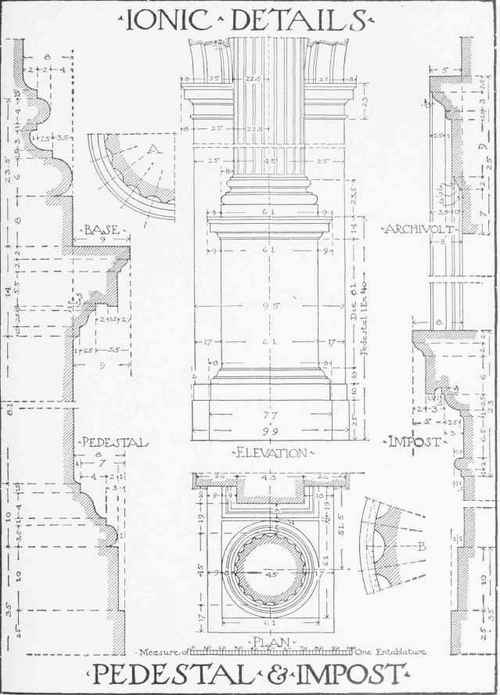
PLATE XII.
(A reproduction at small size or Portfolio Plate XII.)
78. The cymatium or cap of the pedestal is fourteen in height, divided as follows: a fillet, one and five-tenths, cyma-recta, two and five-tenths, surmounted by a small fillet of five-tenths, a corona of five and five-tenths, a cyma-reversa of two, and a listel of two. The projection of the cap from the plinth of the column base and the die of the pedestal is nine, of which two parts are for the cyma-reversa and listel, and three and five-tenths for the corona in which is cut a small drip. The base of the pedestal is forty-five in height divided thus: first plinth, twenty-five; second plinth, ten; torus, three and five-tenths; fillet, one; cyma-reversa, four; upper fillet, one and five-tenths. The projection of the base is eight, of which one is for the conge, four for the cyma-reversa, two for the torus, and one for the first plinth.
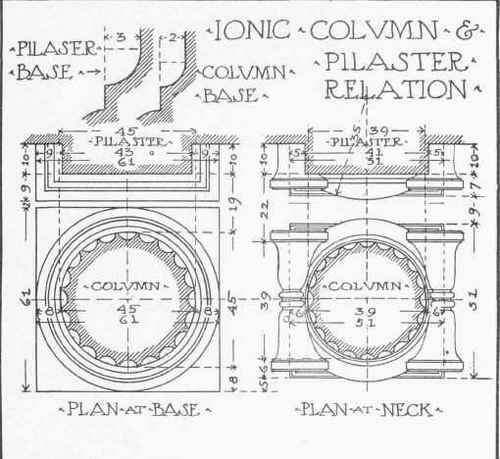
Fig. 12.
79. The impost is twenty-three parts high and is sub-divided as follows: astragal three; frieze six and five-tenths; fillet one; quarter round, two and five-tenths; corona, six; cyma-reversa, two; listel, two. The projection of the impost is eight; two for the cyma and listel, three for the corona, and three for the quarter-round and fillet. The archivolt is twenty-five in width composed of a first band of seven, a cyma of two, a second band of nine, a bead of one and five-tenths, a cyma of three, and a listel of two and five-tenths. The projection of the archivolt is five, of which one and live-tenths is for the projection of the second band beyond the first, one for the bead, and two and five-tenths for the cyma and its fillet.
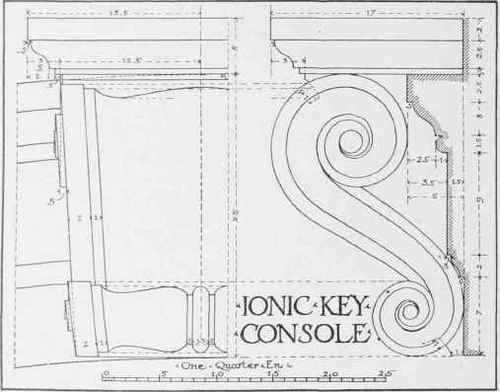
Fig. 13.
80. The relation of Ionic column taper to pilaster taper (Fig. 12) is as follows: The lower diameter of the Ionic column is forty-five, and its upper diameter thirty-nine, the difference is six, which, divided into three parts, as in the Doric order, gives for the lower width of the pilaster forty-three, and for the upper width forty-one. The projections of the bases differ only in the conge of the shaft which measures three for the pilaster and two for the column.
The disposition of the capital is the same for the pilaster as for the column so far as the volutes are concerned, the catheti being the same distance (forty-two parts) from each other. It may be noticed only in the plan of the capital of the pilaster, that the outer edge of the quarter-round forms an arc of a circle drawn with a radius of thirty-five,while the astragal is rectangular in plan like the face of the pilaster, and, running between the volutes, connects them with one another.

PLATEXIII
A reproduction at small size or Portfolio Plate XI11
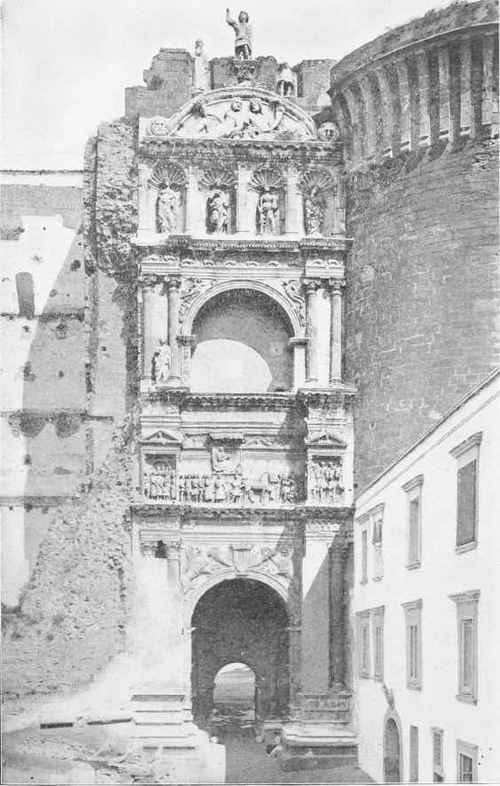
TRIUMPHAL ARCH IN NAPLES, ITALY.
Guiliano da Maiano, Architect. Erected in 1470 in Honor of Alfonso d'Aragona.
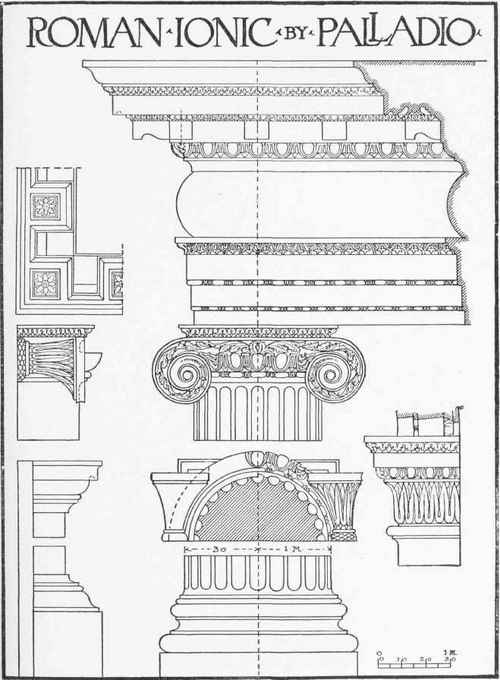
PLATE XIV.
(A reproduction at small size of Portfolio Plate XIV.)
81. In Fig. 13 will be found a drawing of the Ionic console. Sometimes one of these consoles is placed at the crown of an arch intersecting the archivolt. The sides of such a console radiate from the center of the arch; the stone on which the console is carved is called the "key" of the arch or the "keystone."
Continue to:


